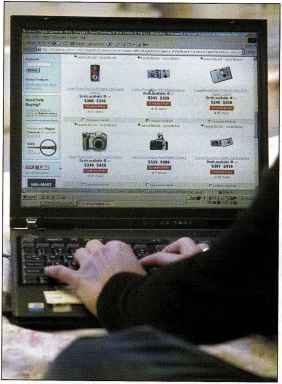Price
Companies also face many considerations in setting their international prices. For example, how might Black & Decker price its power tools globally? It could set a uniform price all around the world, but this amount would be too high a price in poor countries and not high enough in rich ones. It could charge what consumers in each country would bear, but this strategy ignores differences in the actual costs from country to country. Finally, the company could use a standard markup of its costs everywhere, but this approach might price Black & Decker out of the market in some countries where costs are high.
Reaf
Marketing 19.2
Watch Your Language!
Many global companies have had difficulty crossing the language barrier, with results ranging from mild embarrassment to outright failure. Seemingly innocuous brand names and advertising phrases can take on unintended or hidden meanings when translated into other languages. Careless translations can make a marketer look downright foolish to foreign consumers.
The classic language blunders involve standardized brand names that do not translate well. When Coca-Cola first marketed Coke in China in the 1920s, it developed a group of Chinese characters that, when pronounced, sounded like the product name. Unfortunately, the characters actually translated as "bite the wax tadpole." Now, the characters on Chinese Coke bottles translate as "happiness in the mouth."
Several modern-day marketers have had similar problems when their brand names crashed into the language barrier. Chevy's Nova translated into Spanish as no va—"it doesn't go." GM changed the name to Caribe (Spanish for Caribbean) and sales increased. Microsoft's new operating system, Vista, turns out to be a disparaging term for a frumpy old woman in Latvia. Rolls-Royce avoided the name Silver Mist in German markets, where mist means "manure." Sunbeam, however, entered the German market with its Mist Stick hair-curling iron. As should have been expected, the Germans had little use for a "manure wand." IKEA marketed a children's workbench named FARTFULL (the word means "speedy" in Swedish)—it soon discontinued the product.
Interbrand of London, the firm that created household names such as Prozac and Acura, recently developed a brand-name "hall of shame" list, which contained these and other foreign brand names you're never likely to see inside the local Safeway: Krapp toilet paper (Denmark), Crapsy Fruit cereal (France), Poo curry powder (Argentina), and Pschitt lemonade (France).
I ICC A* UNITED STATES
affordable solutions for better Irving
IKEA near you IKEA help center customer service home sft
» h&n® > êfefeâ«Èi»*J IKEA > Chfesfcfi's fumftuM > FAfTOUU.«»* fesneh products fc-1 \ search my profite • Jain our ©mail ïisi
Work bench
FARTFULL $109.00/ pieces
(prto® refect® setected options)
website prices may uary from store pmm, r Storage specs tor games- ami accessories *jné& f® seat.
> tvtouse pmi fcsth for rt^-htfKteiS md for toft-hsntitd peopte.
> Seat part wih hanrtsj to fee easy to move «í»Mt.
> Ths met«! it® t tisoMm as a »agüeite feoard.
; $ Sgftflft® yowl Mftr mam ; -4S ®«W> k •<> % l ® ferfng kMs dessgnsr; Ua Moi'sndS!"
^.errfarge image
Global language barriers: Some standardized brand names do not translate well globally.
Travelers often encounter well-intentioned advice from sen/ice firms that takes on meanings very different from those intended. The menu in one Swiss restaurant proudly stated, "Our wines leave you.nothing to hope for." Signs in a Japanese hotel pronounced, "You are invited to take advantage of the chambermaid." At a laundry in Rome, it was, "Ladies, leave your clothes here and spend the afternoon having a good time."
Advertising themes often lose—or gain— something in the translation. The Coors beer slogan "get loose with Coors" in Spanish came out as "get the runs with Coors." Coca-Cola's "Coke adds life" theme in Japanese translated into "Coke brings your ancestors back from the dead." The milk industry learned too late that its American advertising question "Got Milk?" translated in Mexico as a more provocative "Are you lactating?" In Chinese, the KFC slogan "finger-lickin' good" came out as "eat your fingers off." And Motorola's Hellomoto ring tone sounds like "Hello, Fatty" in India. Even when the language is the same, word usage may differ from country to country. Thus, the
British ad line for Electrolux vacuum cleaners— "Nothing sucks like an Electrolux"—would capture few customers in the United States.
So, crossing the language barrier involves much more than simply translating names and slogans into other languages. You can't uproot a concept and just translate it and put it into another market," says one translation consultant. "It's not really about translating word for word, but actually adapting a certain meaning." Beyond just word meanings and nuances, international marketers must also consider things like phonetic appeal and even associations with historical figures, legends, and other factors. The consultant points to the Chinese adaptation of the name for eBay's online free classified ads service—Kijiji (which means "village" in Swahili)—as a localization success story. "In Chinese, the three characters used to phonetically represent the Kijiji name map almost exactly to the English pronunciation," she says. "Plus, they have the meaning of people pulling together to share things, which is totally descriptive of the business and brand."
Sources: Quotes from Randall Frost, "Lost In Translation," Brandchannel.com, November 13, 2006. For the above and other examples, see David A. Ricks, "Perspectives: Translation Blunders in International Business," Journal of Language for International Business, 7:2, 1996, pp. 50-55: Martin Croft, "Mind Your Language," Marketing, June 19, 2003, pp. 35-39: Mark Lasswell, "Lost in Translation," Business 2.0, August 2004, pp. 68-70: "Lost in Translation," Hispanic, May 2005, p. 12; Ross Thomson, "Lost in Translation," Medical Marketing and Media, March 2005, p. 82; and Eric Pfanner, "Marketers Take a Fresh Look at the Language Barrier," International Herald Tribune, July 22, 2007.
Regardless of how companies go about pricing their products, their foreign prices probably will be higher than their domestic prices for comparable products. A Gucci handbag may sell for $60 in Italy and $240 in the United States. Why? Gucci faces a price escalation problem. It must add the cost of transportation, tariffs, importer margin, wholesaler margin, and retailer margin to its factory price. Depending on these added costs, the product may have to sell for two to five times as much in another country to make the same profit.

- The Internet is making global price difference more obvious, forcing companies toward more standardized international pricing.
To overcome this problem when selling to less-affluent consumers in developing countries, many companies make simpler or smaller versions of their products that can be sold at lower prices. For example, in China and other emerging markets, Dell sells its simplified Dell EC280 model for $340 dollars, and P&G sells everything from shampoo to toothpaste in less costly formulations and smaller packages at more affordable prices.
Another problem involves setting a price for goods that a company ships to its foreign subsidiaries. If the company charges a foreign subsidiary too much, it may end up paying higher tariff duties even while paying lower income taxes in that country. If the company charges its subsidiary too little, it can be charged with dumping. Dumping occurs when a company either charges less than its costs or less than it charges in its home market. For example, U.S. nail makers recently accused foreign nail makers—especially those in China and the United Arab Emirates—of dumping excess supplies of nails in the United States, hurting the domestic steel nail market. In over the past three years, imports of nails from the two countries have grown 70 percent, forcing U.S. manufacturers to close facilities and lay off workers. The U.S. International Trade Commission agreed, and the U.S. Commerce Department is imposing duties as high as 118 percent on steel nail imports from the offending countries.40 Various governments are always watching for dumping abuses, and they often force companies to set the price charged by other competitors for the same or similar products.
Recent economic and technological forces have had an impact on global pricing. AFor example, the Internet is making global price differences more
_ obvious. When firms sell their wares over the Internet, customers can see how much products sell for in different countries. They can even order a given product directly from the company location or dealer offering the lowest price. This is forcing companies toward more standardized international pricing.
Whole-channel view
Designing international channels that take into account the entire global supply chain and marketing channel, forging an effective global value delivery network.
Continue reading here: Deciding on the Global Marketing Organization PP 5996
Was this article helpful?


